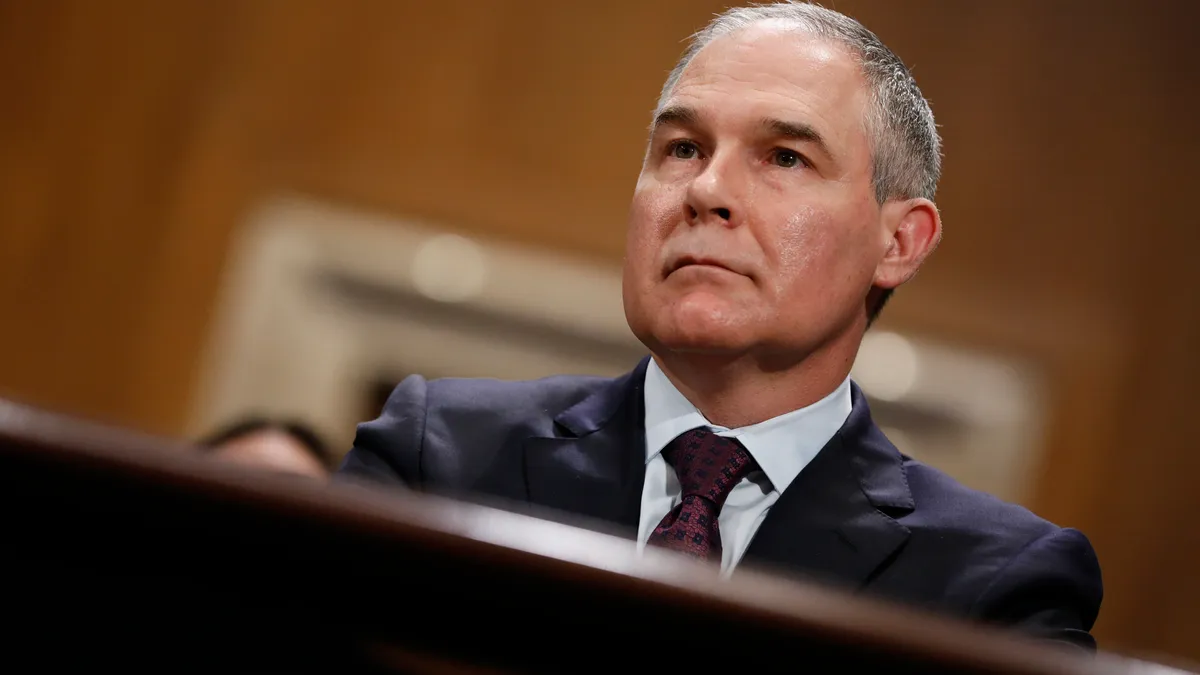Quick Facts
Scott Pruitt
-
Tenure:
February - Present
-
Reshaped:
Scientific, rulemaking processes
-
Rolled back:
30 regulations
Spearheaded:
Internal debate to withdraw from the Paris Climate Accord
One year into the Trump administration, it’s tough to find any official who’s done more to reshape energy and environmental policy than EPA Administrator Scott Pruitt.
Since his Senate confirmation in February, the former Oklahoma attorney general has positioned himself at the forefront of the White House’s new “energy dominance” strategy — exercising influence beyond the walls of his agency.
Of the more than 50 separate environmental rules the Trump administration has sought to rescind, Pruitt’s EPA is involved in more than 30, including high-profile reversals of the Clean Power Plan, the Waters of the U.S. rule, methane regulations on oil and gas drilling, rules for coal ash disposal, and more. It is, according to the New York Times, “a regulatory rollback larger in scope than any other over so short a time in the agency’s 47-year history.”
Not all of Pruitt’s actions have found immediate success — the D.C. Circuit Court of Appeals threw out his methane rule rollback in July — but the new administrator has also moved to reshape how the EPA does business. Since taking office, he’s met with industry representatives virtually every day but has reportedly made most regulatory decisions with little regard for input from EPA’s career staff. He’s removed EPA-funded scientists from the agency’s advisory boards floated “red team/blue team” exercises to relitigate climate change, and supported President Trump’s proposal to cut the agency’s budget by a third.
To his supporters, those actions aim to bring back what Pruitt calls regulatory “balance” after eight years of overreach by the Obama administration. But to environmentalists and many EPA veterans, the administrator’s actions are part of a concerted campaign to undermine the agency’s core mission as an environmental watchdog.
“The atmosphere of EPA is really tense,” Betsy Southerland, the former director of science and technology in the agency’s water office, told PBS in October. “What everyone is trying desperately to do is to hope against hope that their facts will change Scott Pruitt’s mind … That they’ll be special and they’ll be able to convince the administrator not to go with whatever the industry people have asked him to do and to give some deference to the science and engineering behind previous regulations.”
Whether Pruitt’s approach represents a reset or a deconstruction for EPA, it’s clear he has a supporter in the Oval Office. While other cabinet officials preached negotiation, Pruitt reportedly playing a central role in convincing the president to withdraw from the Paris Climate Accord, and his public energy rhetoric — particularly comments about “storing solid hydrocarbons onsite” — has previewed a number of later administration energy policies, like the DOE cost recovery proposal.
While other energy officials, particularly Energy Secretary Rick Perry and Interior Secretary Ryan Zinke, have taken steps to reshape energy policy in the past year, the sharp focus and potential lasting impact of Pruitt’s actions over the past year make his tenure stand out.
Looking Forward
If his influence in the White House continues, the EPA will likely be a flashpoint for energy and environmental battles throughout the Trump administration.














